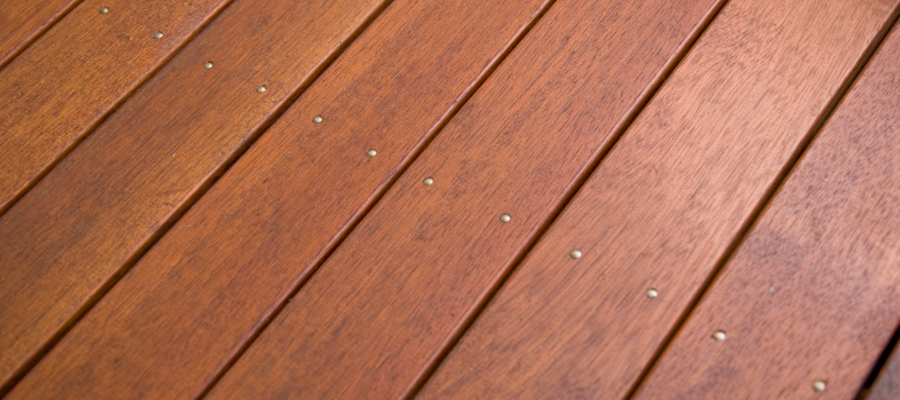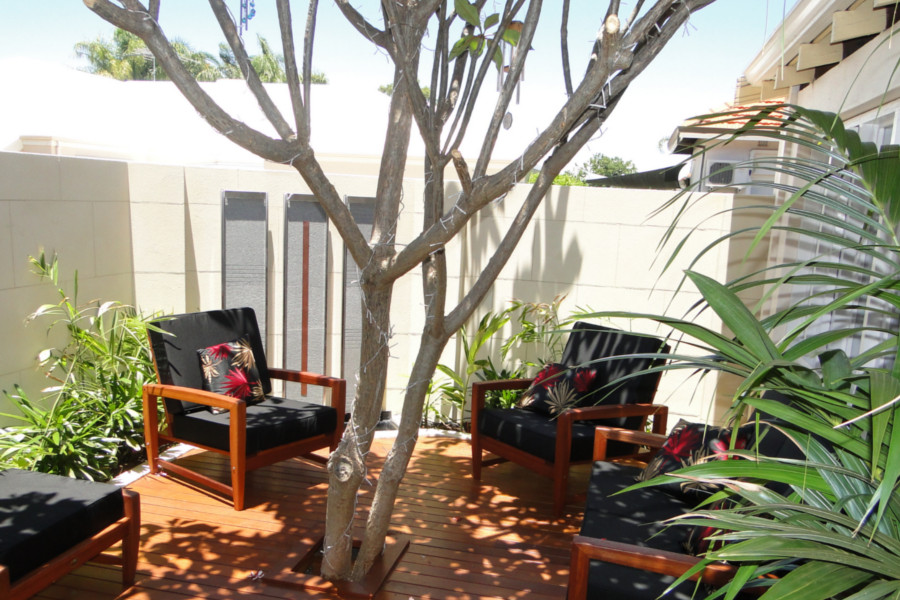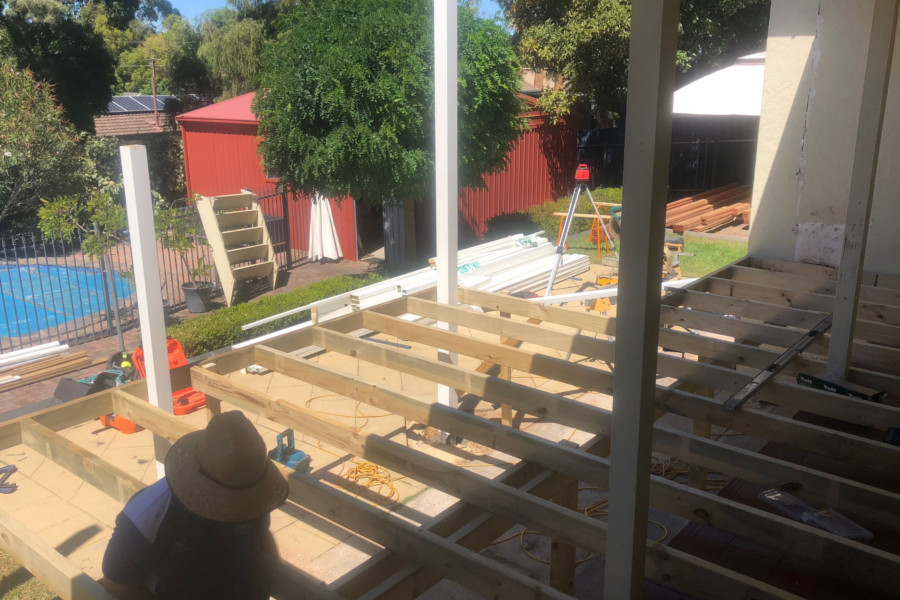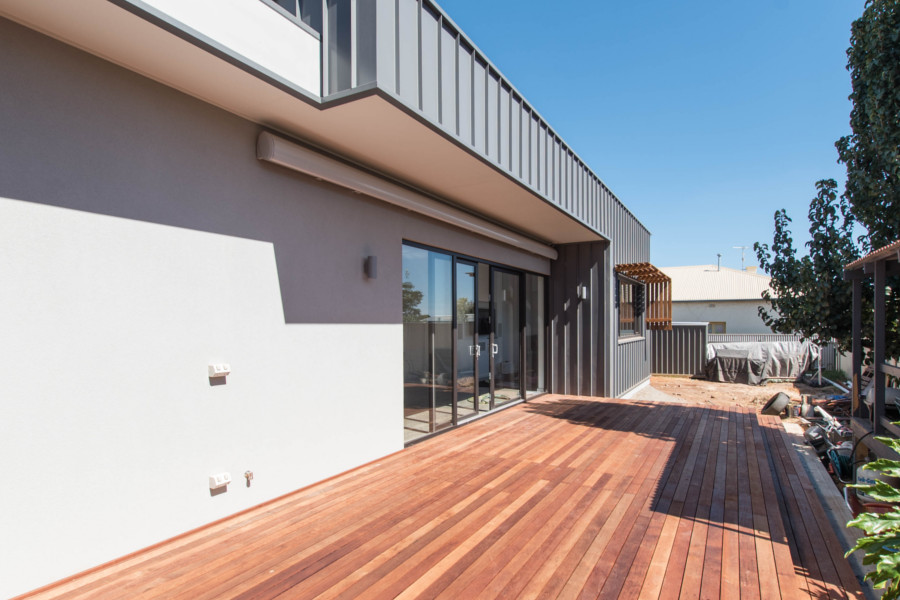
Due to its extreme durability, Merbau is commonly used for decking, flooring, staircases, boat building, and making outdoor furniture. Also known as Kwila, Pacific Kwila, Ipil, and Vesi, Merbau is grown in the South East Pacific rim, and is widely available in Australia.
Merbau is harvested from tropical forests in North Queensland, Malaysia, Fiji, Vietnam, the Philippines, Madagascar, Papua New Guinea, Thailand, Solomon Islands, New Caledonia, Vanuatu, Indonesia and Samoa. Trees can grow up to 40 metres high, with a trunk diameter of around 60cm.
Appearance
When freshly cut, Merbau heartwood is a beautiful orange-brown colour, which reddens as it ages. This in sharp contrast with the sapwood, which is usually white, buff or pale yellow in colour. You might also find small gold or yellow flecks throughout the wood, which can help to differentiate it from similar species such as Kapur. Its grain is usually interlocked or wavy. Merbau has a density rating of 850kg per cubic metre, which is exceptionally dense even among hardwoods.
Durability
Merbau is a favourite choice for decking projects because of its excellent durability. With a durability class of 2, you can expect your decking to last for 15 to 40 years without decay. The combination of its unusual density and strength make Merbau more durable than most other timber used to make outdoor decking and furniture. These attributes result in minimal shrinkage, resistance to rot and insect attacks, and great performance in extreme weather and even saltwater.
Softwoods sell 140mm wide decking boards in Merbau, which are very popular with builders.
Workability
Merbau is also very versatile, and is relatively easy to work with using most carpentry tools. However, while the wood will cut cleanly, over time it may cause wear on the cutting edges of your tools. It finishes well with stain, polish and paint, but if there is a drawback it’s the tendency that it has towards tannin bleed. Tannin is a polyphenolic compound that when leeching from timber causes it to stain whatever surface it runs onto. If you are using Merbau on or near a surface that will stain, we recommend that you either give the wood time to season elsewhere, or you wash it repeatedly with a deck clean product containing oxalic acid. This way the tannins will be able to run out of the timber and won’t cause staining in or near your home. The good news is that tannin only leeches from timber for a short time after it is harvested, so this is not a long term concern.
Common Uses
Apart from decking, Merbau is also commonly used to make furniture, bench tops, counter tops turned objects, musical instruments, and tool handles. It is used to make marine jetties and staircases, boats and flooring. It can also be used in large scale engineering and construction projects, and in infrastructure projects to create cross arms, piles, sleepers, posts, and in bridge building.
Notes
Working with Merbau comes with the same considerations that accompany all other timbers. To avoid irritation of the skin, nose and eyes, safety goggles, gloves and a face mask should be used when sawing and sanding. If you haven’t previously washed the timber with a deck cleaning product, it should be left for a few weeks after being laid to season in the weather and lose the last remaining tannins.
Why choose Merbau?
So, why should you choose Merbau for your decking project?
• Weather resistance: Ideal for harsh and diverse climates.
• Durability: It will last as long as any hardwood on the market
• Strong: it has a high density and great toughness rating.
• Appearance: It has a beautiful, rich colour and texture.
• Workability: it’s very easy to work with and has minimal shrinkage.
• Resistant: It resists rot and insect infestation.



